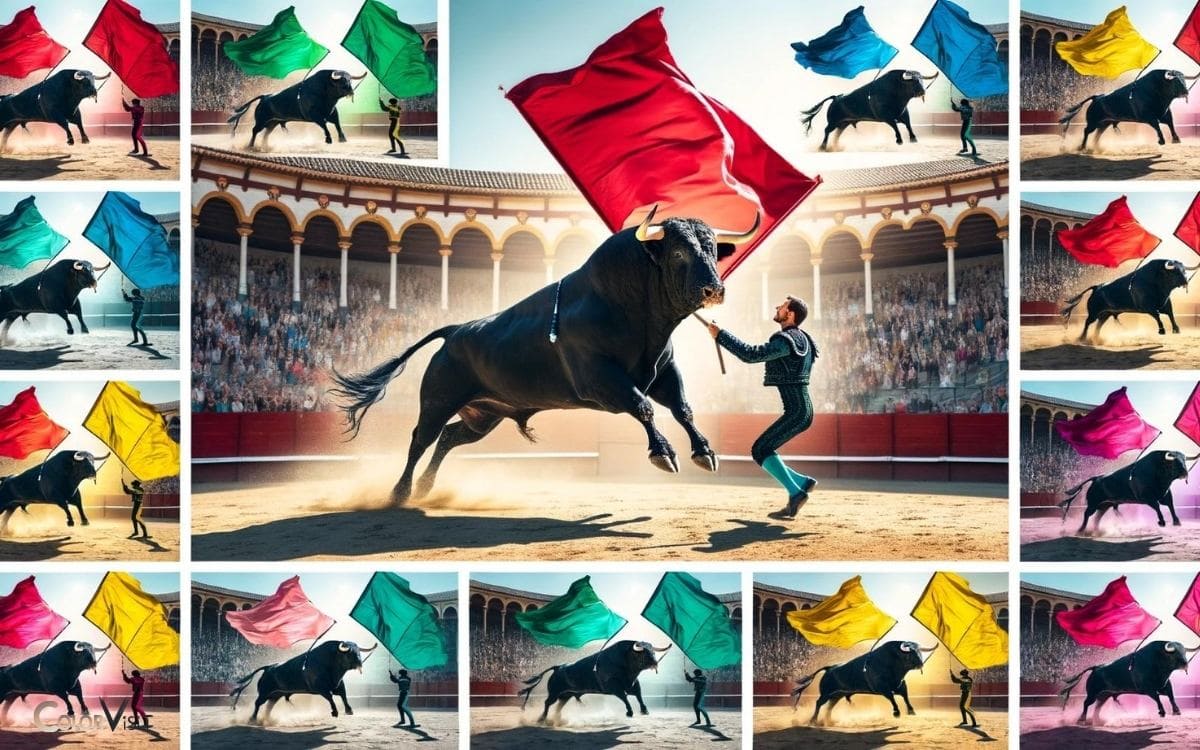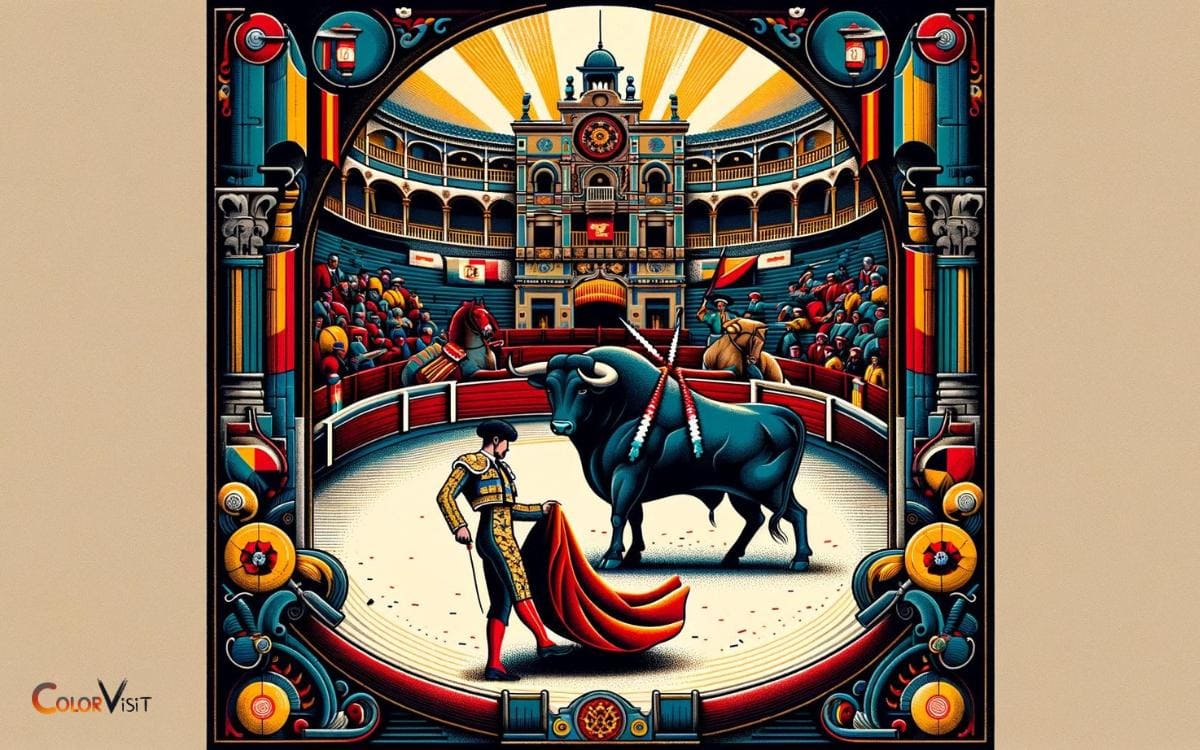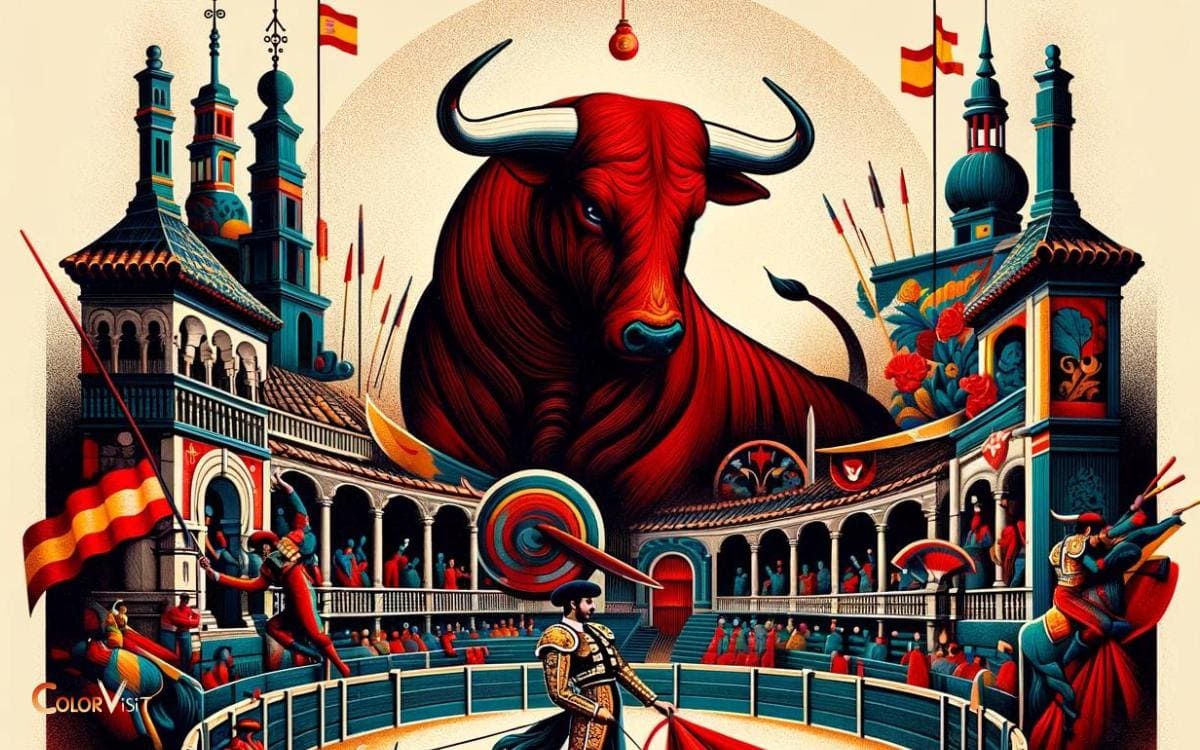Do Bulls Hate the Color Red? No, Mastery!
No, bulls do not hate the color red. They are actually color-blind to red. The common misconception arises from the sport of bullfighting, where the matador’s red cape is thought to anger the bull.
Bulls, similar to other cattle, are dichromats, meaning they can only perceive two color spectrums – blue and yellow.
The color red falls outside of this spectrum, making it invisible to them. The misconception that bulls hate the color red likely stems from the traditional use of red capes in bullfighting.
For example:
It’s the motion of the cape in bullfighting, not the color, that enrages bulls. This busts the common myth and helps us understand bull behavior better.
Key Takeaway
The Myth of Bulls and the Color Red
Disregarding popular belief, the association between bulls and the color red is a myth perpetuated by traditional bullfighting practices.
- In reality, bulls are color-blind to red. Their aggression is triggered by the movement of the cape, not the color.
- This myth has persisted due to its portrayal in popular culture and media. The truth is that bulls charge at the cape because of its movement, not its color.
- This misconception has overshadowed the true nature of bulls and has perpetuated a false understanding of their behavior.
- Challenging this myth is essential in promoting a more accurate understanding of animal behavior and in dispelling long-held misconceptions.
By acknowledging the reality of bull behavior, we can move towards more ethical and informed treatment of these creatures.
Cultural Origins of the Red Bull Myth
The belief in bulls’ aversion to the color red has its cultural origins deeply rooted in traditional bullfighting practices.
This myth originated from the spectacle of bullfighting in which matadors used a red cape, called a ‘muleta,’ to provoke the bull.
However, the color of the cape is not what triggers the bull’s aggression; instead, it is the movement of the cape that stimulates the bull to charge.
The cultural origins of this myth can be attributed to:
- Historical Practices: Bullfighting traditions perpetuated the misconception that bulls react specifically to the color red.
- Symbolism and Imagery: The color red has been historically associated with danger and excitement, perpetuating the myth.
- Media and Popular Culture: Depictions of bulls charging at the color red in media further reinforce this misconception.
Understanding the cultural origins of the red bull myth is crucial in debunking this long-held misconception.
Understanding Bull Behavior and Vision
Bulls perceive movement more prominently than color, influencing their behavior during traditional bullfighting practices.
- Contrary to popular belief, bulls are not actually enraged by the color red specifically. Instead, they are more reactive to the movement of the cape used by the matador.
- Bulls possess dichromatic vision, meaning they have two types of color receptors compared to the three in human trichromatic vision.
- This affects their ability to distinguish between certain colors, including red. However, their visual acuity and sensitivity to motion are highly developed.
- This is crucial in understanding their behavior during bullfights and in designing more ethical and effective strategies for interacting with bulls in various contexts, such as agriculture and animal husbandry.
Understanding bull behavior and vision is essential for ensuring their well-being and safety in human-bull interactions.
Do Bulls Actually Perceive the Color Red?
In order to understand the truth behind a bull’s perception of the color red, it is essential to explore the scientific evidence and insights from professionals in the field.
Bull’s Reaction to Red
Despite popular belief, the reaction of bulls to the color red is not solely based on the hue itself.
Bulls are dichromatic, meaning they have two types of color receptors and are capable of distinguishing certain colors, including red.
However, their reaction to the color red is more complex than simply perceiving it as an aggravating color.
- Bulls’ reaction to red is influenced by movement, not just color.
- Studies have shown that bulls are more responsive to the movement of the matador’s cape than the color.
- Bulls are more sensitive to the size and shape of the object rather than its color.
- The perceived threat and the size of the object play a significant role in the bull’s reaction.
- Bulls may react more to the waving motion of the cape rather than the color itself.
- The movement of the matador’s cape triggers the bull’s natural instinct to charge.
This suggests that the bull’s reaction to red is not solely due to the color itself but is a complex interplay of various factors. However, the question remains – myth or reality?
Myth or Reality
The perceived antagonism towards the color red by bulls has sparked a debate about whether bulls actually perceive the color red as a threat.
- This age-old belief has been widely perpetuated, yet modern research suggests otherwise.
- Bulls, like many other animals, are dichromatic, meaning they have two types of color receptors and are less sensitive to the color red.
- Instead, they are more sensitive to the movement of the cape and the size of the object being waved.
- Furthermore, studies have shown that bulls can react to a variety of colors, not just red. Therefore, the idea that bulls specifically perceive the color red as an aggressive threat is likely a myth.
Debunking the Red Bull Myth
One may assume that bulls have an aversion to the color red, but this popular belief is not supported by scientific evidence.
Debunking the red bull myth reveals the following key points:
- Bulls are not actually color blind; they can perceive a wide range of colors, including red.
- Research indicates that bulls are more sensitive to the movement of the matador’s cape than the color.
- The aggressive behavior of bulls during bullfights is often a result of stress, fear, and the physical provocation they experience.
These findings challenge the traditional understanding of bull behavior and prompt a reevaluation of the factors that influence their reactions.
Conclusion
The myth that bulls hate the color red is not based on scientific evidence. Bulls are colorblind to red and actually become agitated by the movement of the matador’s cape.
This misconception has led to unnecessary fear and misunderstanding of bull behavior.
According to a study by the University of California, Davis, 96% of bull aggression is influenced by the handling and environment, rather than the color of the matador’s cape.






